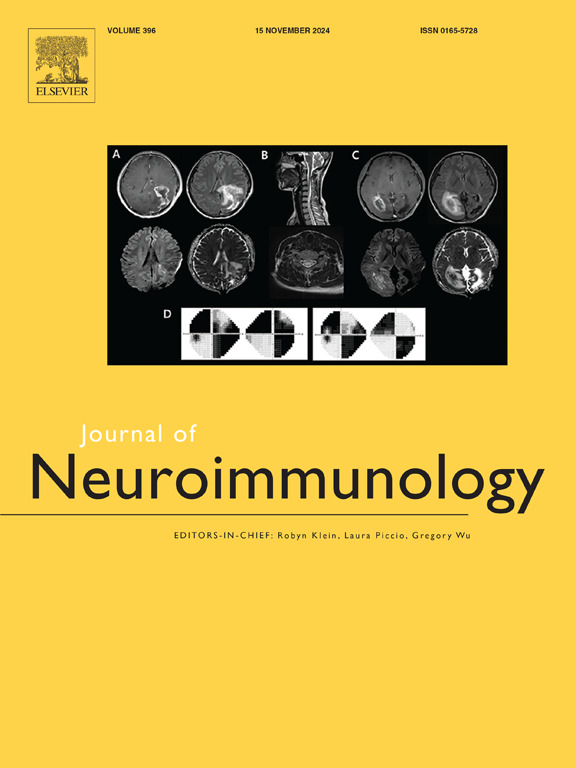Rheumatoid meningitis in the absence of active synovitis: A potential association of semaphorin 4A
IF 2.5
4区 医学
Q3 IMMUNOLOGY
引用次数: 0
Abstract
Rheumatoid meningitis (RM) is a rare complication that can develop even in patients with inactive rheumatoid arthritis (RA). Currently, there are no reliable indicators that reflect the disease activity of RM, and its pathogenesis remains poorly understood. Herein, we presented three cases of RM without active synovitis and investigated the possible association between RM and semaphorin 4A (Sema4A). Two of the three patients with RM developed sudden onset of seizures, while one patient exhibited a slowly progressive gait disturbance and cognitive impairment. All the patients had inactive synovitis, positive anti-cyclic citrullinated peptide antibodies in the serum, high-intensity lesions on the cerebral surface on head magnetic resonance imaging, or a favorable response to glucocorticoids. Serum and cerebrospinal fluid (CSF) Sema4A levels in patients with RM were elevated during the acute phase compared to those in the remission phase. Serum Sema4A was significantly increased in patients with RM than in RA controls (23.8 ng/ml versus 7.48 ng/ml, p = 0.014), although there were no significant differences in RA disease activity between the two groups. Sema4A was expressed in a few infiltrating cells and stromal tissues of the RM leptomeninges. This is the first report to demonstrate that serum and CSF Sema4A levels correlate with the disease activity of RM sine active synovitis. The expression of Sema4A in the leptomeninges may be associated with RM pathogenesis.
无活动性滑膜炎的类风湿脑膜炎:信号蛋白4A的潜在关联
类风湿脑膜炎(RM)是一种罕见的并发症,甚至可以发展为非活动性类风湿关节炎(RA)患者。目前,还没有可靠的指标反映RM的疾病活动性,其发病机制也尚不清楚。在此,我们报告了三例无活动性滑膜炎的RM,并研究了RM与信号蛋白4A (Sema4A)之间的可能关联。3例RM患者中有2例突然发作,1例表现为缓慢进行性步态障碍和认知障碍。所有患者均为非活动性滑膜炎,血清抗环瓜氨酸肽抗体阳性,头部磁共振成像显示脑表面高强度病变,或糖皮质激素反应良好。与缓解期相比,急性期RM患者血清和脑脊液(CSF) Sema4A水平升高。RM患者血清Sema4A明显高于RA对照组(23.8 ng/ml vs 7.48 ng/ml, p = 0.014),尽管两组之间RA疾病活动性无显著差异。Sema4A在RM轻脑膜的少数浸润细胞和基质组织中表达。这是首次证实血清和脑脊液Sema4A水平与活动性滑膜炎相关的报道。Sema4A在瘦脑膜中的表达可能与RM的发病机制有关。
本文章由计算机程序翻译,如有差异,请以英文原文为准。
求助全文
约1分钟内获得全文
求助全文
来源期刊

Journal of neuroimmunology
医学-免疫学
CiteScore
6.10
自引率
3.00%
发文量
154
审稿时长
37 days
期刊介绍:
The Journal of Neuroimmunology affords a forum for the publication of works applying immunologic methodology to the furtherance of the neurological sciences. Studies on all branches of the neurosciences, particularly fundamental and applied neurobiology, neurology, neuropathology, neurochemistry, neurovirology, neuroendocrinology, neuromuscular research, neuropharmacology and psychology, which involve either immunologic methodology (e.g. immunocytochemistry) or fundamental immunology (e.g. antibody and lymphocyte assays), are considered for publication.
 求助内容:
求助内容: 应助结果提醒方式:
应助结果提醒方式:


